
American Barley Wine
American Barley Wine is one of my favorite styles, and I really miss the days when I judged it for the Toronado Barleywine Festival in San Francisco. Several times I’ve had the pleasure of judging barley wine at both the World Beer Cup and GABF, especially one year when my table did three rounds of barley wine in a row, including the final medal round. That table included Rich Norgrove, from Bear Republic, and George Reisch, from Anheuser-Busch. I love the complexity of barley wines, which make them great sipping, sharing beers. I think of it as one of the quintessential winter beers.
What follows is information about barley wines, collected from a variety of sources. If you know of any additional resources about this type of beer, please let me know.
History
|
 Origin: |
 8
8A Comparison of Style Ranges
| Source | SRM | ABV | O.G. | F.G. | IBU | ||||
|---|---|---|---|---|---|---|---|---|---|
| BJCP1 (22C) American | 10-19 | 8-12% | 1.080-1.120 | 1.016-1.030 | 50-100 | ||||
| Brewery DB | 11-22 | 8.4-12% | Varies | 1.024-1.028 | 60-100 | ||||
| GABF2 (89B) American | 11-18 | 8.5-12.2% | 1.090-1.120 | 1.024-1.028 | 60-100 | ||||
| Periodic Table7 (64) | 14-22 | 8.4-12.2% | 1.085-1.120 | 1.024-1.032 | 50-100 | ||||
| WBC6 (81A) American-Style | 11-18 | 8.5-12.2% | 1.090-1.120 | 1.024-1.028 | 60-100 |
Yeast
Ale | Belgian | ||
Brettanomyces | Lactobacillus | Pediococcus | Other |
BJCP Description: 22C. American Barleywine1
Overall Impression: A well-hopped American interpretation of the richest and strongest of the English ales. The hop character should be evident throughout, but does not have to be unbalanced. The alcohol strength and hop bitterness often combine to leave a very long finish.
Aroma: Hop character moderate to assertive and often showcases citrusy, fruity, or resiny New World varieties (although other varieties, such as floral, earthy or spicy English varieties or a blend of varieties, may be used). Rich maltiness, with a character that may be sweet, caramelly, bready, or fairly neutral. Low to moderately-strong fruity esters and alcohol aromatics. However, the intensity of aromatics often subsides with age. Hops tend to be nearly equal to malt in the aroma, with alcohol and esters far behind.
Color Range
Appearance: Color may range from light amber to medium copper; may rarely be as dark as light brown. Often has ruby highlights. Moderately-low to large off-white to light tan head; may have low head retention. May be cloudy with chill haze at cooler temperatures, but generally clears to good to brilliant clarity as it warms. The color may appear to have great depth, as if viewed through a thick glass lens. High alcohol and viscosity may be visible in “legs” when beer is swirled in a glass.
Flavor: Strong, rich malt flavor with a noticeable hop flavor and bitterness in the balance. Moderately-low to moderately high malty sweetness on the palate, although the finish may be somewhat sweet to quite dry (depending on aging). Hop bitterness may range from moderately strong to aggressive. While strongly malty, the balance should always seem bitter. Moderate to high hop flavor (any variety, but often showing a range of New World hop characteristics). Low to moderate fruity esters. Noticeable alcohol presence, but well-integrated. Flavors will smooth out and decline over time, but any oxidized character should be muted (and generally be masked by the hop character). May have some bready or caramelly malt flavors, but these should not be high; roasted or burnt malt flavors are inappropriate.
Mouthfeel: Full-bodied and chewy, with a velvety, luscious texture (although the body may decline with long conditioning). Alcohol warmth should be noticeable but smooth. Should not be syrupy and under-attenuated. Carbonation may be low to moderate, depending on age and conditioning.
Characteristic Ingredients: Well-modified pale malt should form the backbone of the grist. Some specialty or character malts may be used. Dark malts should be used with great restraint, if at all, as most of the color arises from a lengthy boil. New World hops are common, although any varieties can be used in quantity. Generally uses an attenuative American ale yeast.
Style Comparison: The American version of the Barleywine tends to have a greater emphasis on hop bitterness, flavor and aroma than the English Barleywine, and often features American hop varieties. Typically paler than the darker English Barleywines (and lacking in the deeper malt flavors) but darker than the golden English Barleywines. Differs from a Double IPA in that the hops are not extreme, the malt is more forward, and the body is fuller and often richer. An American Barleywine typically has more residual sweetness than a Double IPA, which affects the overall drinkability (sipping vs. drinking).
GABF/World Beer Cup Description
American Barley Wines are amber to deep red/copper-garnet. Chill haze is allowable at cold temperatures. Fruity-ester aroma is often high. Caramel and/or toffee malt aromas are often present. Hop aroma is medium to very high. High residual malty sweetness, often containing a caramel and/or toffee flavors is present. Hop flavor is medium to very high. American type hops are often used but not necessary for this style. Hop bitterness is high. Complexity of alcohols is evident. Fruity-ester flavor is often high. Very low levels of diacetyl may be acceptable. Body is full. Characters indicating oxidation, such as vinous (sometimes sherry-like) aromas and/or flavors, are not generally acceptable in American-style barley wine ales, however if a low level of age-induced oxidation character harmonizes and enhances the overall experience this can be regarded favorably.
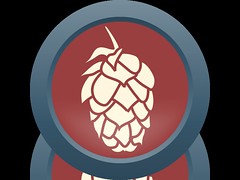
Glassware


Pint Glass (or Becker, Nonic, Tumbler), Snifter3
Food Pairing
![]()
![]()
![]()
![]()
![]()
Cheese (sharp; Blue, Cheddar, pungent; Gorgonzola, Limburger) General (Dessert, Digestive)3
Crème brûlée, Oxtail4
Dark Chocolate, Strong Blue Cheeses5
Seasonality & Temperature
Season: Winter |
Serving: 50-55° F |
Storage: 45-50° F |
Beer 101: Barley Wine |

Links About Barley Wine
- About.com
- All About Beer’s Profile
- All About Beer’s Stylistically Speaking by K. Florian Klemp
- Beer Advocate
- BJCP 2008 Online (19C)
- Brewery DB
- Brew Your Own, by Terry Foster
- CraftBeer.com
- GotBeer.com
- Michael Jackson’s Beer Styles
- Rate Beer
- Wikipedia
Further Reading
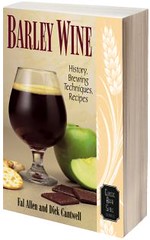
- Barley Wine: History, Brewing Techniques and Recipes
- Chapter 11 of Amber Gold & Black, by Martyn Cornell
- Page 191 of The Beer Bible, by Jeff Alworth
- Page 119 of The Essentials of Beer Style, by Fred Eckhardt
- No. 64 on The Periodic Table of Beer Styles
- Page 152 of What the Hell am I Drinking?, by Don Russell
Commercial Examples of Barley Wine
Avery Hog Heaven Barleywine, Anchor Old Foghorn, Great Divide Old Ruffian, Rogue Old Crustacean, Sierra Nevada Bigfoot, Victory Old Horizontal1
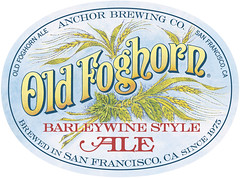
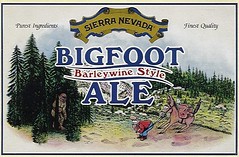
Top 10 Examples
Beer Advocate
|
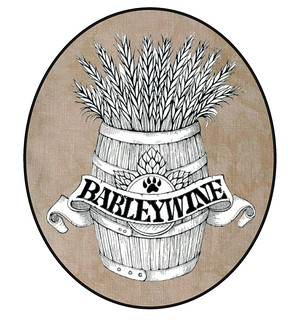
Key to Sources
1 = BJCP 2015
2 = GABF 2014
3 = Beer Advocate
4 = Garrett Oliver’s Brewmaster’s Table
5 = Brewers Association / CraftBeer.com
6 = World Beer Cup Guidelines 2016
7 = The Periodic Table of Beer Styles 2001
8 = GotBeer.com
